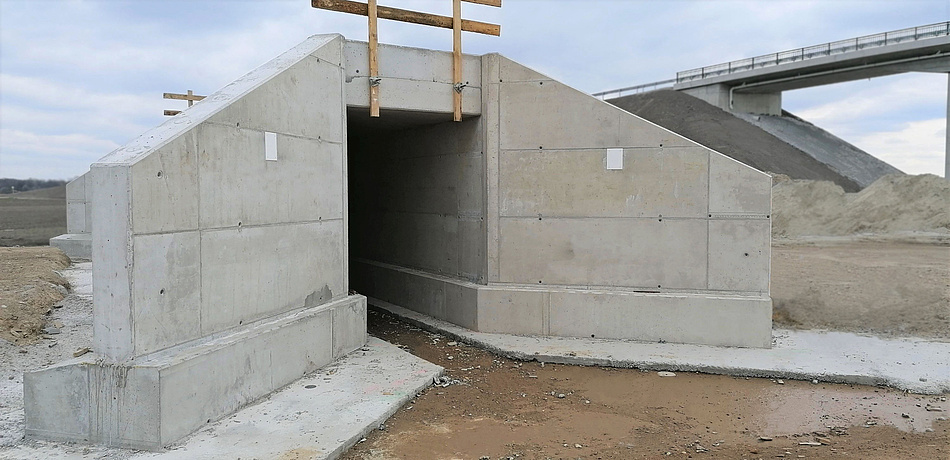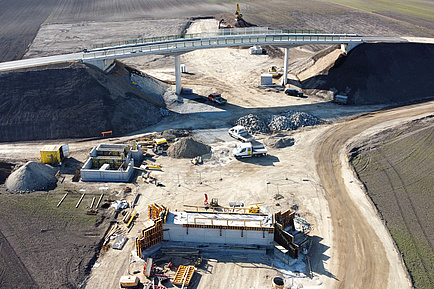When hares, hedgehogs and other small animals cross the Pottendorf line in Ebreichsdorf in Lower Austria, they do so in a very special concrete tunnel, which leads wildlife safely underneath the tracks. This is important because, despite the railway line, there has to be an exchange of animal populations onto both sides of the railway. Otherwise, in the extreme case, certain animal species would disappear. Half of the wildlife crossing near Ebreichsdorf in Lower Austria is made of CO2-reduced, so-called eco-concrete and half of standard normal concrete. Each concreting section – foundation, ceiling, walls – was carried out according to this division. "This enabled us to compare the types of concrete directly with each other," explains Joachim Juhart from the Institute of Technology and Testing of Construction Materials at Graz University of Technology (TU Graz). The concrete expert supported the construction from the scientific side and made use of preliminary work. As early as 2016, he tested various formulations for eco-concrete in the laboratory for their durability and strength. As a pioneer in sustainability, ÖBB-Infrastruktur AG has now implemented this concept in practice. "As Austria's largest climate-protection company, ÖBB not only aims to transport people and goods safely and in an environmentally conscious manner, but also to plan and build in a sustainable and eco-friendly way, thus actively contributing to the protection of our environment in every respect," says Thomas Schöfmann, Project Manager, ÖBB-Infrastruktur AG.
Formulation for CO2-reduced concrete – from laboratory to application
In order to meet the standardized quality and safety criteria, however, numerous steps were necessary in the run-up to the concreting work. Juhart and his research group, in cooperation with the Wopfinger Transportbeton company, tested in the laboratory the suitability of the materials being considered for mixing, supplemented (conventional) cement with so-called "eco- and micro-fillers" (these are secondary raw materials and rock flour) and mixed various multi-component mixtures. Two blends were finally short-listed and small-scale tests finally decided on the optimal formulation. This was scaled up at Wopfinger Transportbeton's mixing plant and tested according to a specially created "verification concept for CO2-reduced (performance-based) concretes". All requirements for the properties of the concrete, such as workability, strength and, in particular, durability, were verified by Wopfinger Transportbeton and by TU Graz in the course of formulation development. Finally, the project partners worked out a "concreting concept" together with the executing construction company, Porr. This specified all the measures required for the concrete work, including quality assurance and curing of the concrete.
Long-term monitoring and game-changer potential
Concreting work on the small animal culvert began in March 2021 and was completed in May. Two sample walls were also erected in the immediate vicinity of the structure. These help the researchers at TU Graz to monitor factors such as moisture content, temperature development or corrosion potential over a long period of time. The technical managing director of Wopfinger Transportbeton, Franz Denk, is pleased that "the work with the eco-concrete went just as smoothly as with the standard concrete."
Denk believes that eco-concrete has good chances on the market: "The construction industry will also play its part on the road to a climate-friendly future. And we now have a wonderful alternative in the form of eco-concrete – with the potential to be a game changer." ÖBB is now working on using this concrete in larger projects as well.
This research area is anchored in the Field of Expertise “Advanced Materials Science”, one of five strategic research foci of TU Graz.


